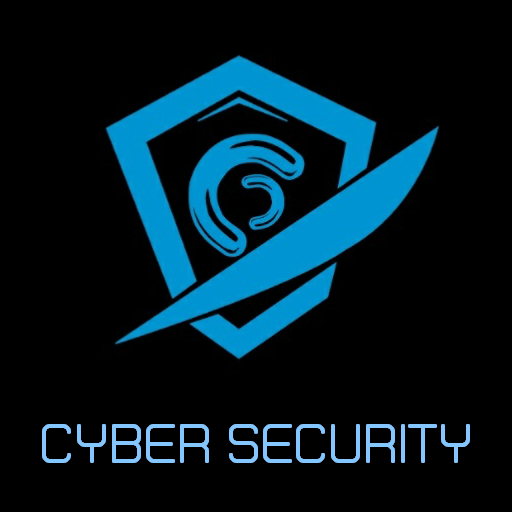Navigating the Digital Battleground Who Are the Major SIEM Vendors.
At the forefront of digital defense are Security Information and Event Management (SIEM) systems powerful platforms designed to provide comprehensive visibility into an organization’s security posture.
SIEM systems are the digital watchtowers of modern cybersecurity, collecting, aggregating, and analyzing security-related data from diverse sources across an IT environment. This real-time analysis allows organizations to detect, investigate, and respond to security incidents promptly, maintain compliance, and gain critical situational awareness. For military and defense entities, the insights gleaned from SIEM are not just beneficial; they are foundational to maintaining operational readiness and protecting classified information.
Let’s delve into the major players dominating the SIEM landscape, each offering unique strengths tailored to various organizational demands, from advanced threat detection to intuitive user experiences.
What is SIEM and Why is it Crucial?
Before exploring the vendors, it’s essential to grasp the core function of SIEM. A SIEM solution typically performs two primary functions:
- Security Information Management (SIM): This involves long-term storage, analysis, and reporting of log data, crucial for compliance auditing, forensic analysis, and historical trend analysis.
- Security Event Management (SEM): This focuses on real-time monitoring, correlation of events, notifications, and dashboards to provide immediate alerts about potential threats.
By unifying these functions, SIEM platforms enable security teams to connect dots from seemingly disparate events, identifying sophisticated attacks that might otherwise go unnoticed.
The Major SIEM Players
Several vendors have established themselves as leaders in the SIEM market, continually innovating to meet the escalating demands of cybersecurity.
1. Splunk: The Data-to-Everything Platform
Overview: Splunk is renowned for its powerful data analytics capabilities, often described as the “Google for your logs.” While not exclusively a SIEM vendor, Splunk Enterprise Security (ES) is a robust and highly scalable SIEM solution built on its core data platform. Its strength lies in its ability to ingest, index, and analyze massive volumes of machine data from virtually any source.
Key Features & Benefits:
- Unparalleled Data Ingestion: Collects and indexes data from any source, regardless of format, offering unparalleled visibility.
- Powerful Search & Analytics: Ad-hoc search, reporting, and dashboarding capabilities allow security analysts to quickly investigate incidents and hunt for threats.
- Scalability: Highly scalable, making it suitable for even the largest and most complex defense environments with vast data streams.
- Machine Learning: Integrated machine learning algorithms for anomaly detection, user behavior analytics (UEBA), and predictive security.
- Extensible Ecosystem: A vast marketplace of apps and add-ons enhances its functionality for specific use cases and integrations.
Military Context: Splunk’s ability to process and correlate data from diverse, often siloed, military systems (e.g., network devices, endpoint logs, intelligence feeds, operational technology) provides a comprehensive, real-time picture of the security landscape, crucial for maintaining situational awareness in complex operational environments.
2. IBM QRadar: AI-Driven Security Intelligence
Overview: IBM QRadar is a comprehensive SIEM platform known for its integrated approach to security intelligence. It combines SIEM capabilities with log management, network activity monitoring, and vulnerability management, augmented by IBM’s cognitive security capabilities.
Key Features & Benefits:
- Advanced Correlation Engine: Utilizes sophisticated rules and analytics to correlate events across the network, detecting complex attack patterns.
- Network Flow Analysis: Monitors network traffic flows (NetFlow, sFlow, etc.) for anomalies, insider threats, and data exfiltration attempts.
- AI-Driven Insights (Watson): Leverages IBM Watson for Security to provide deeper insights, automate investigations, and enhance threat intelligence.
- Integrated Threat Intelligence: Automatically integrates with X-Force Threat Intelligence, keeping the system updated with the latest threat indicators.
- Compliance Management: Strong capabilities for regulatory compliance auditing and reporting (e.g., NIST, GDPR, HIPAA).
Military Context: QRadar’s deep network visibility and AI-driven automation make it invaluable for detecting sophisticated nation-state attacks and rapidly responding to threats in high-stakes military networks, reducing the burden on security analysts.
3. LogRhythm: NextGen SIEM Platform
Overview: LogRhythm positions itself as a “NextGen SIEM” platform, emphasizing its integrated capabilities that extend beyond traditional SIEM, incorporating User and Entity Behavior Analytics (UEBA), Network Detection and Response (NDR), and Security Orchestration, Automation, and Response (SOAR).
Key Features & Benefits:
- End-to-End Visibility: Offers a unified platform for log management, endpoint monitoring, network forensics, and security analytics.
- UEBA & NDR: Advanced behavioral analytics for identifying anomalous user and network activities that often signal insider threats or compromised accounts.
- Security Orchestration & Automation (SOAR): Built-in automation capabilities streamline incident response workflows, reducing mean time to detect (MTTD) and mean time to respond (MTTR).
- Threat Hunting Capabilities: Provides tools and workflows specifically designed to enable proactive threat hunting by security analysts.
- Compliance & Audit: Robust capabilities for demonstrating compliance with various regulations and internal policies.
Military Context: LogRhythm’s SOAR capabilities are particularly beneficial for military cyber operations, enabling rapid, automated responses to known threats, freeing up highly skilled personnel to focus on complex, novel attacks. Its UEBA and NDR provide crucial insights into internal threats and advanced persistent threats (APTs).
4. Trellix (formerly McAfee Enterprise Security Manager – ESM)
Overview: Following the merger of McAfee Enterprise and FireEye, Trellix emerged as a new entity offering a comprehensive extended detection and response (XDR) platform that includes powerful SIEM capabilities. Trellix ESM, as part of this broader suite, provides advanced threat detection, correlation, and response.
Key Features & Benefits:
- Real-time Correlation: High-speed event processing and correlation engine to identify threats as they unfold.
- Integrated Threat Intelligence: Leverages Trellix’s vast threat intelligence network, including insights from former FireEye Mandiant frontline investigations.
- Centralized Management: Provides a unified console for managing security operations, offering a holistic view of the security posture.
- Scalable Log Management: Efficiently collects, stores, and analyzes log data for forensics, compliance, and reporting.
- Contextual Awareness: Offers rich contextual information around security events, helping analysts understand the scope and impact of incidents.
Military Context: Trellix’s focus on XDR and its rich threat intelligence, particularly from its FireEye lineage, makes it exceptionally adept at detecting sophisticated, targeted attacks often associated with state-sponsored actors, providing military organizations with critical insights into advanced threats.
Beyond the Big Four: Other Notable Mentions
While the above are major players, the SIEM market is vibrant and includes other strong contenders that cater to diverse needs:
- Microsoft Sentinel: A cloud-native SIEM solution built on Azure, offering scalability, AI-driven analytics, and deep integration with Microsoft’s product ecosystem. Ideal for organizations heavily invested in Azure and M365.
- Elastic Security (Elastic Stack): Leveraging Elasticsearch, Kibana, Beats, and Logstash, Elastic Security offers a powerful, open-source-driven SIEM solution that is highly flexible and cost-effective, particularly for those with strong in-house technical teams.
- Rapid7 InsightIDR: Focuses on user behavior analytics (UEBA) and endpoint detection and response (EDR) alongside traditional SIEM functions, providing deep visibility into identity-based threats.
The Paramount Importance of SIEM in Defense
For military and defense organizations, SIEM is not merely a tool; it’s a strategic asset:
- Situational Awareness: Provides a real-time, consolidated view of all security events across complex and dispersed networks, critical for understanding the threat landscape.
- Proactive Threat Hunting: Enables security teams to actively search for hidden threats and vulnerabilities before they escalate.
- Compliance and Auditing: Essential for meeting stringent regulatory requirements and demonstrating adherence to security policies.
- Protection of Sensitive Data: By monitoring access and activity, SIEM helps protect classified information, operational plans, and personnel data.
- Rapid Incident Response: Automates alerts and provides the necessary context for swift and effective response to cyberattacks, minimizing damage and operational disruption.
Choosing the Right SIEM
Selecting the appropriate SIEM vendor is a critical decision. Considerations include:
- Organizational Size and Complexity: Scalability requirements for data ingestion and processing.
- Budget: Licensing models, cloud vs. on-premises deployment costs.
- Existing Infrastructure: Compatibility with current security tools and data sources.
- Specific Security Needs: Focus on compliance, threat hunting, automation, or behavior analytics.
- Cloud Strategy: Preference for cloud-native, hybrid, or on-premises solutions.
- Talent Availability: The skill set required to manage and optimize the platform.
Conclusion
The digital battleground is constantly expanding, and the ability to detect, analyze, and respond to cyber threats at machine speed is non-negotiable, particularly in military and defense contexts. Major SIEM vendors like Splunk, IBM QRadar, LogRhythm, and Trellix stand as vital guardians, each bringing unique strengths to the table. By empowering organizations with unparalleled visibility, advanced analytics, and automated response capabilities, these SIEM solutions are indispensable in maintaining cyber resilience, protecting sensitive data, and ensuring continuous operational effectiveness in the face of an ever-present digital adversary.








